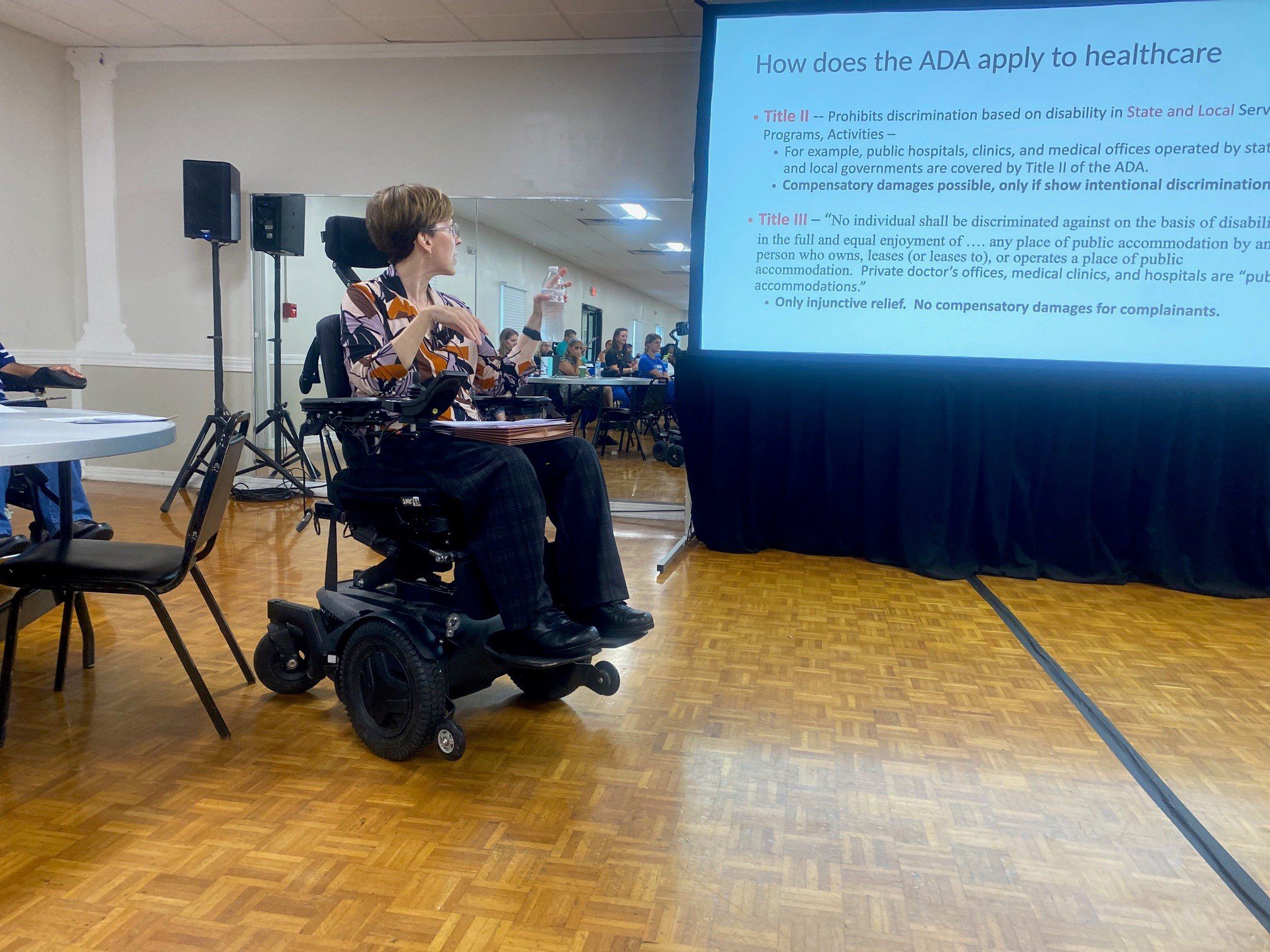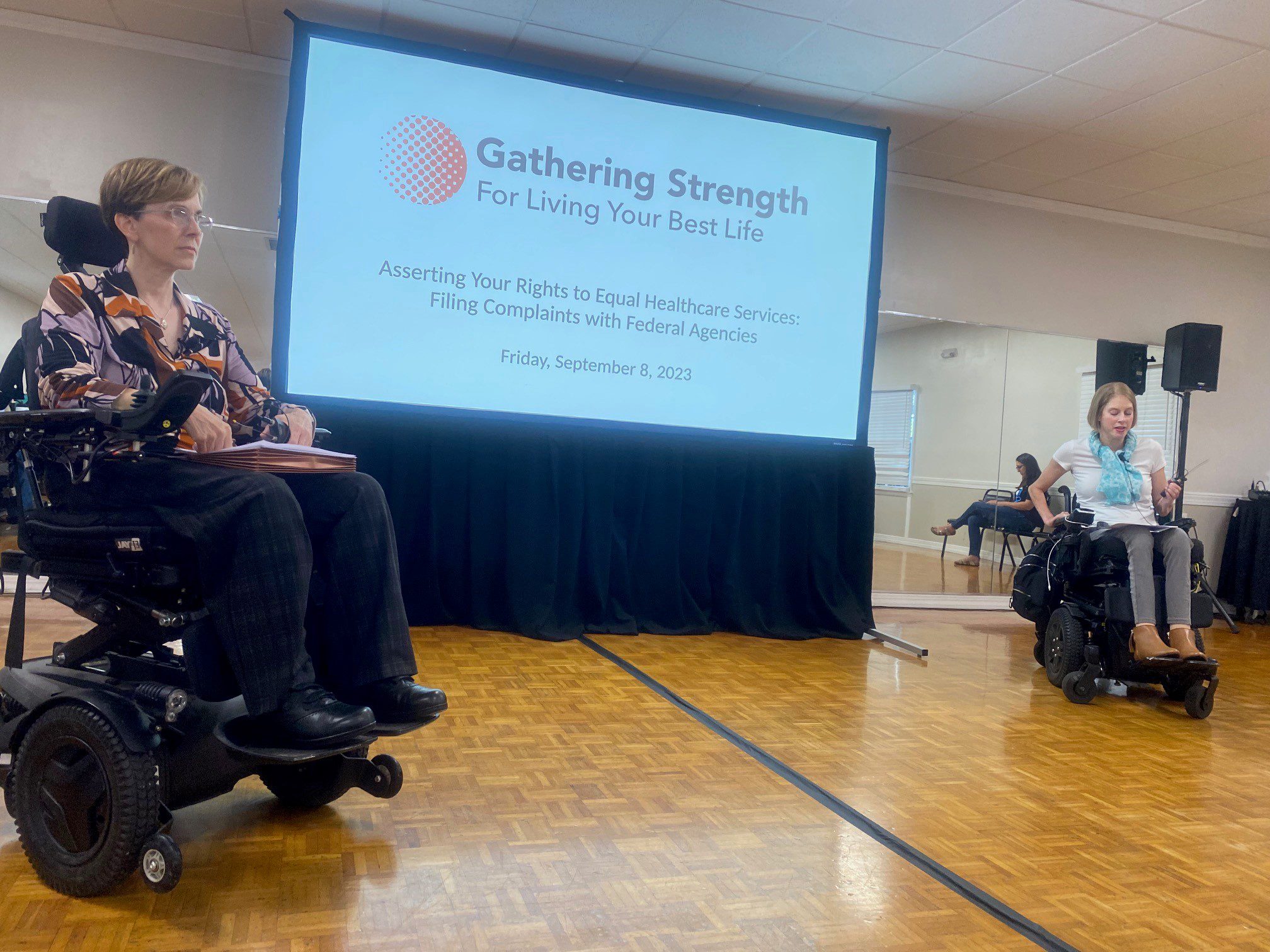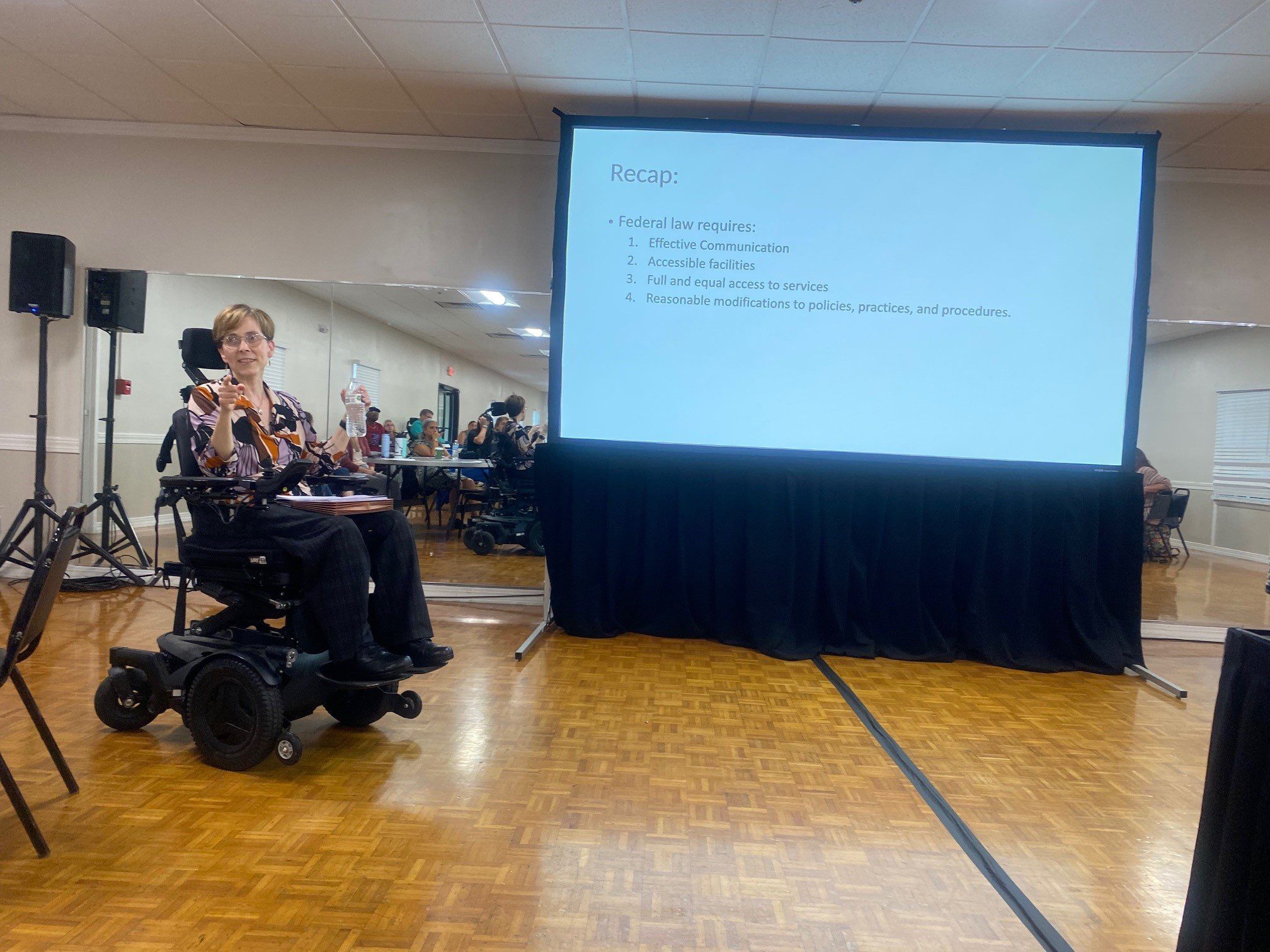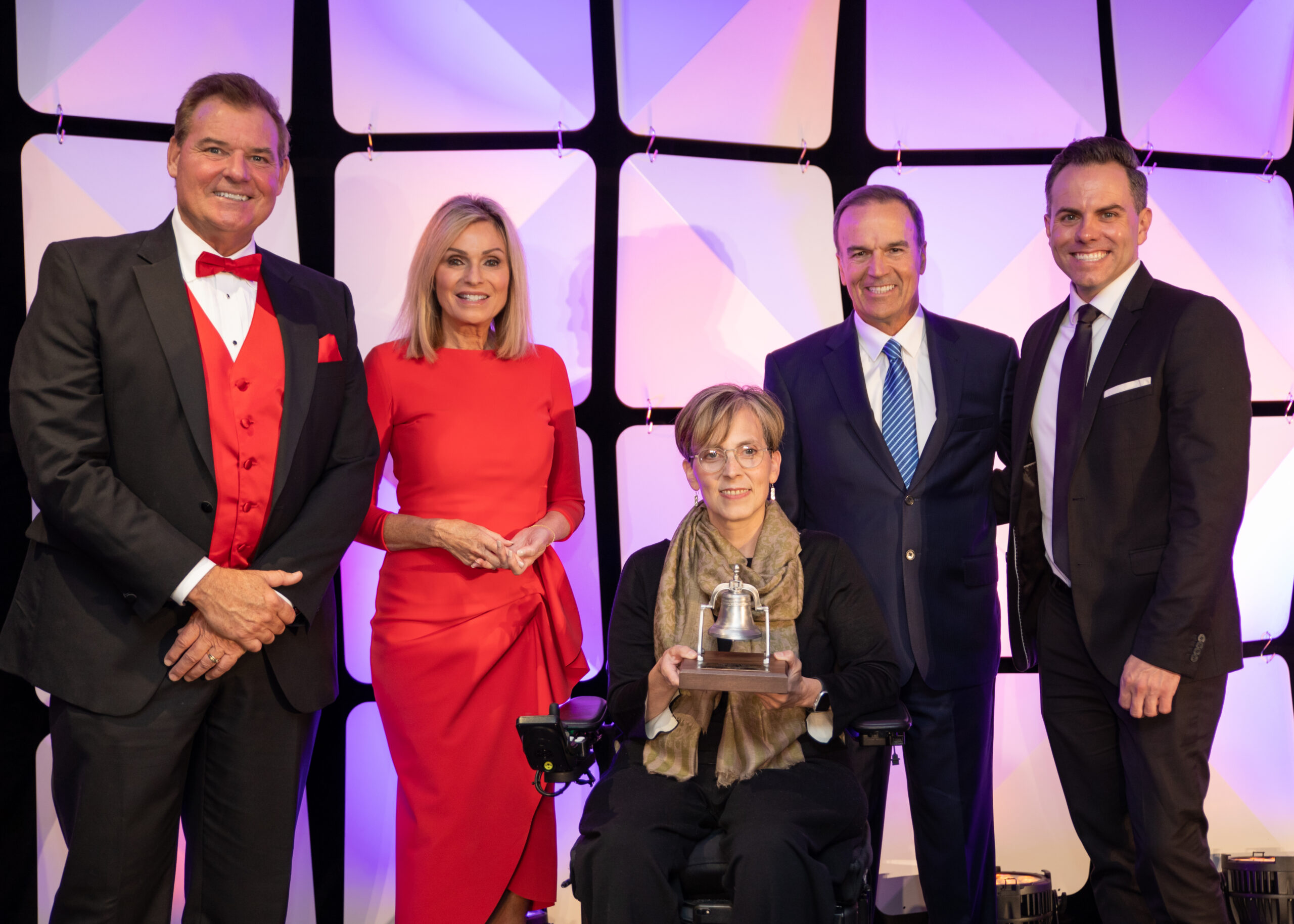What’s New?
Upcoming Events & Information
What’s New?
The Equal Healthcare Service part 1 & 2 recordings are now live!
Enjoy the recording of the Equal Healthcare Service Part 1 & Part 2, made possible by SEADA.
Gathering Strength speaks at the Kentucky Congress on SCI
On September 9, 2023, we were proud to have Elizabeth Fust address the Kentucky Congress on SCI about Equal Healthcare Services. Download the Resources below to learn more.
Asserting Your Rights to Equal Healthcare Services KCSCI 2023→



Many Thanks To Our Donors For A New Nustep
Gathering Strength held an online fundraiser earlier this year to replace an old and broken Nustep in Frazier Rehab Institute’s totally accessible Community Fitness and Wellness (CFW) gym.
Generous donors made it possible for Gathering Strength to purchase a $9,000 T6Max Nustep and place it in the CFW gym for use by people with a variety of disabling conditions. Gathering Strength’s Executive Director took it for a spin and loved how easy it is to transfer to the seat and its smooth operation. It is the only accessible exercise equipment where she can get cardiovascular exercise and simultaneously move her paralyzed legs.
The new Nustep has a fully swiveling and adjustable bariatric seat, lap and chest belts, leg stabilizers, gripping aids, and pre-set workouts. The CFW gym members are using it all the time. We’re so grateful for the donors who have helped to improve the health of people with disabilities by making this equipment available.
